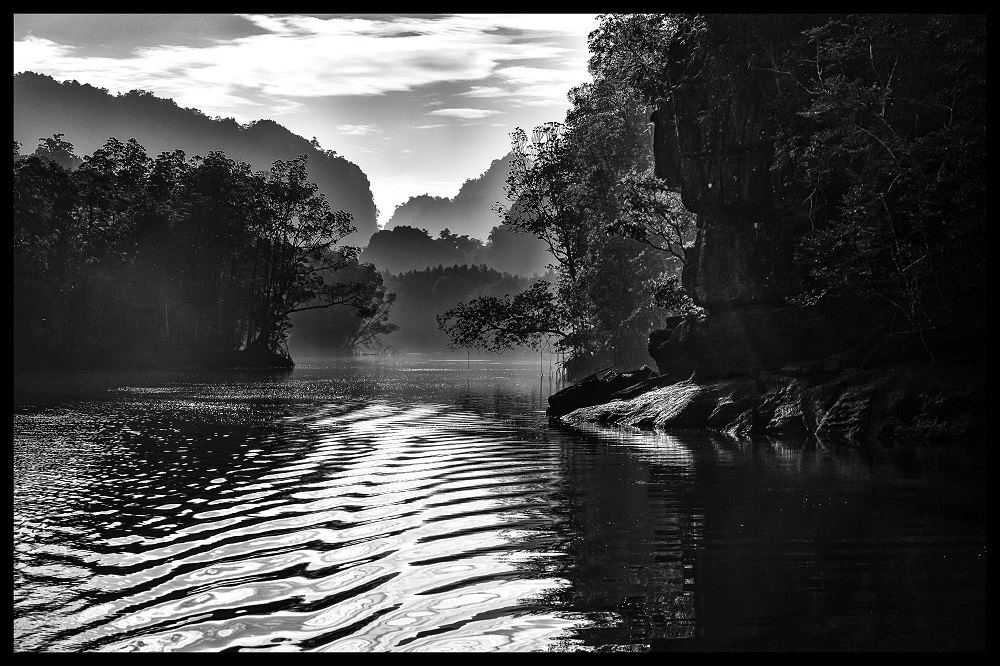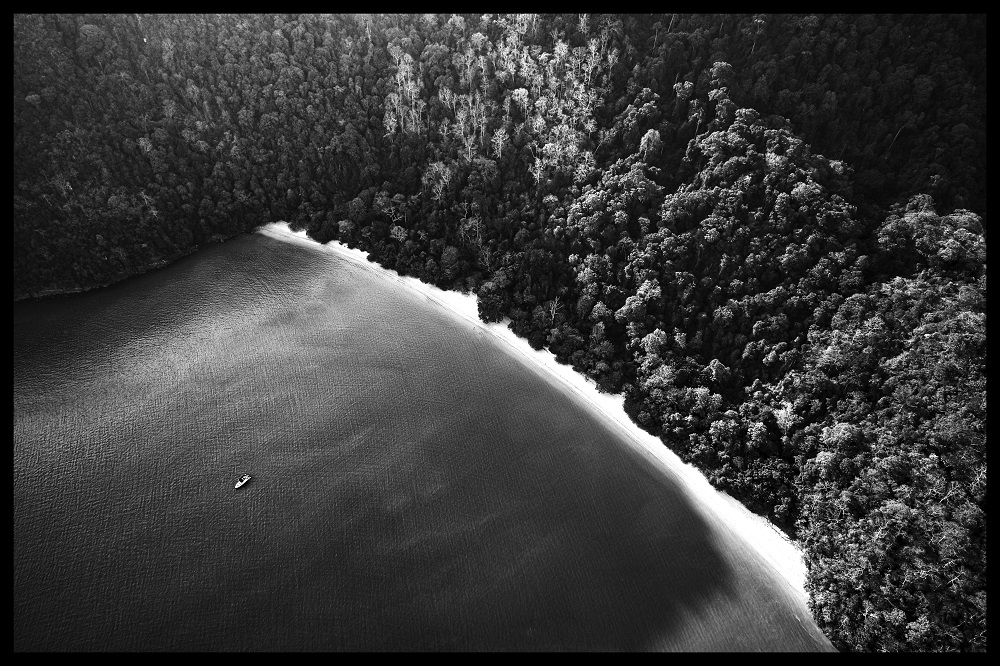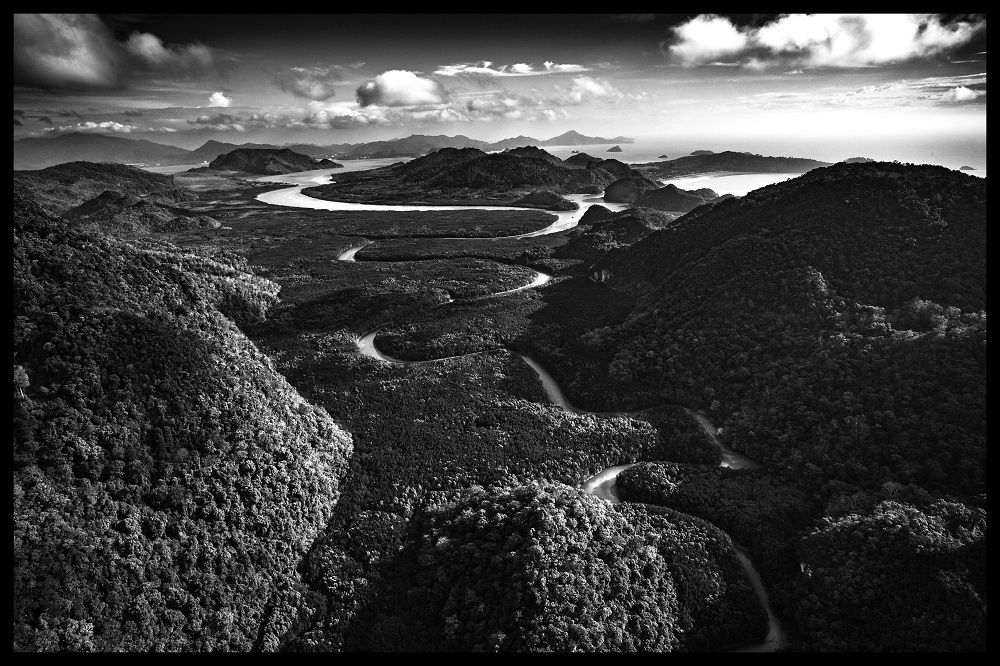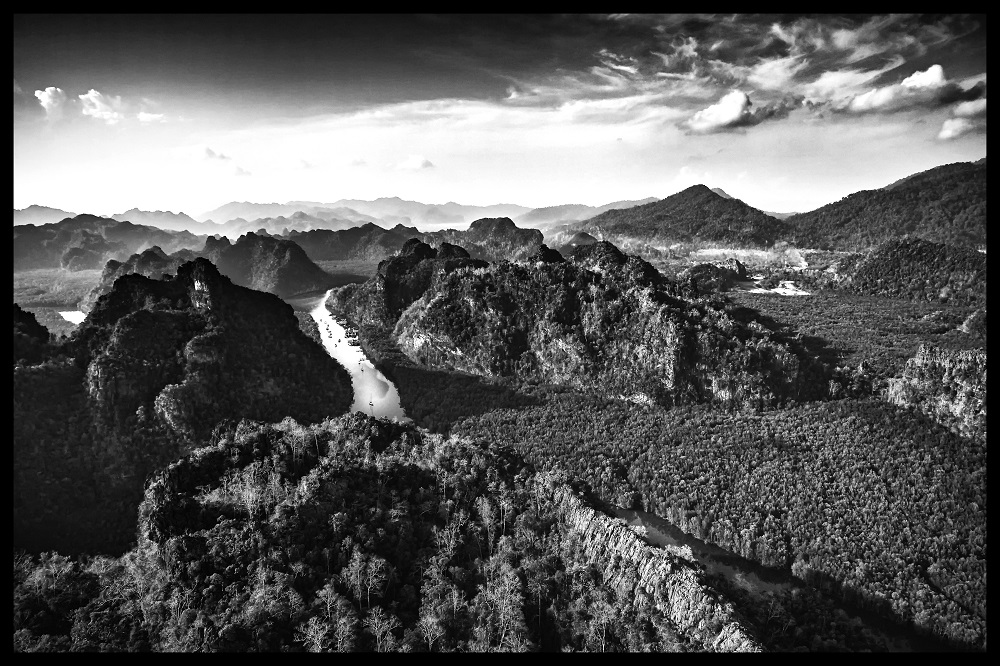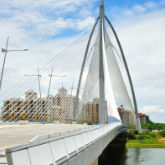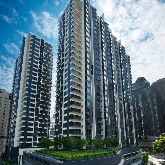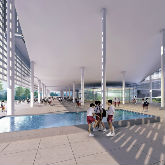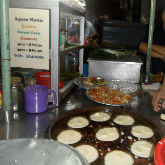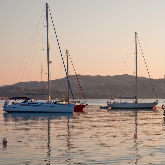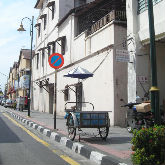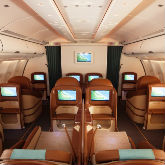
Prepare to see Langkawi as you’ve never seen it before. Sharuna Segaren talks to SC Shekar on his fascinating project photographing this well-known Malaysian island from the sky, as well as the perspective and appreciation the project engendered in him.
Langkawi is much more than just a popular tourist destination with duty-free booze. The island is rich with history and culture, as well as natural landscapes that are abundant in flora and fauna.
Today, it struggles to hold on to its natural splendour amidst growing commercialism. That said, there are organisations and locals who strive to make sure the beauty of Langkawi is not completely lost.
The view from the top
Documentary photographer SC Shekar travelled to Langkawi earlier this year on a quest to capture the amazing diversity of the Langkawi landscape. His project was shot over 2500 feet above the ground by helicopter. The photos, dramatic in black and white, show a unique view of Langkawi that does not often come to one’s mind when picturing the island.
He said, “The island is an old and assertive sage, with plenty of wisdom to share to those who pay due respect. It has seen the way the world has evolved for hundreds of millions of years. From the explosion of life on Earth during the Paleozoic period, to the current perforating growth of highways and hotels, the island struggles to persevere through both growth and decay. It wants to keep its histories alive, and it is through the stories latched on to every detail of nature that would be its saving grace.”
Speaking almost poetically of his experience shooting Langkawi from above, Shekar said, “The Bell 407 helicopter we’re in is a speck of red – a sort of glitch in the unblemished blue sky. In the midst of Langkawi’s permeating beauty, we soar upwards in an attempt to encapsulate what this land has to offer.
“Above the ground, terrains as diverse as mangrove and rainforests, sandstone mountains, and tidal flats, caves and reefs, coexist in abundance and harmony. As the sun traverses from east to west, the forest canopy undulates to the rhythm of its shifting shadows.
“In the morning, the forest floors exhale its misty breath, forming a diaphanous shroud that seeps slowly through the leaves and branches of century-old trees. At this time in other parts of the island, mischievous macaques are ceremoniously grooming each other while others forage through the rich life giving mangroves amid the thick bulbous roots – a favourite past time to get the day started.
“From a distance, limestone mountains and caves form an assortment of peaks and ridges that were carved by persistent rains and winds. Here, a river gently dissects the landscape between Tuba and Dayang Bunting.”
A heritage site
Shekar took on this project in collaboration with the Four Seasons Resort, intending to spread awareness about conservation of the environment as well as the importance of preserving a natural island rich in history and beauty like Langkawi. He explained that his love for Langkawi stems from the uninhabited land on the main land, which was dubbed a World Geopark by UNESCO.
“In 2007, UNESCO officially declared the Langkawi archipelago as one of 94 globally recognized Geoparks in the world. This status has helped preserve huge plots of uninhabited land on the main island – where all the infrastructure, hotels and restaurants are found – from being taken over and demolished by developers.
Though the entire archipelago of 99 islands, surrounding waters and marine ecosystems make up the Geopark, it’s the protected ‘Geoforest’ areas that really impress. These are the 400-million-year-old Machinchang mountain ranges, the Dayang Bunting Marble Geoforest Park and the karst limestone formations of the Kilim Karst Geoforest Park.”
Forty minutes from the main island is Pulau Payar Marine Park, which makes up Malaysia’s oldest Marine
Park sanctuary. Vast array of reef fish and coral life populate the crystal seas here and offer marine biologists and scientists a large treasure trove for research and conservation efforts such as mangrove planting, beach and reef clean ups, and coral preservation.
It is at these areas that ecotourism has seen a boom since the 1990s, where boat tours along Kilim Geoforest Park are constantly organized for large groups of tourists to further educate them about the elements that make up the terrain.
There are also birdwatching activities, jungle trekking, and guided nature walks for those who visit.
Shekar added, “All of the local guides here possess vast knowledge about Langkawi’s wildlife and history. They could name almost every fish in the shore and bird that passes them overhead.”
Robust rainforests
Along the coast of Langkawi are robust rainforests by the sea. They survive the inexorable salty
waves and sediments, as well as the encroaching destruction caused by the rampant greed and folly of humankind.
Shekar reminisced, “On a motorised boat along the river, I watch roosting kingfishers and spoonbills, egrets, and herons amid the dense canopy. Mudskippers brawl in mini battles for well-deserved domains, and monitor lizards dart across the glimmering surface of mudflats toward pools of deeper water for safety.
Fishermen scour between gargantuan roots that sink deep into the seabed. They breathe like clusters of wooden veins dancing on the surface of the water. With a line or gill netting, fishermen hunt for shrimps and snappers, sometimes losing a sandal to the viscous mangrove substrate that can swallow you in thigh-deep places. Sometimes, I might even glimpse an elusive otter, or dolphins or sleeping bats.
On the water is the reflection of the sky and the trees overhead. These large mangrove roots form layers upon layers of barricade and they filter the dirt from the sea water, turning it crystalline and cool.”
Mangroves are an important part of Langkawi, as Shekar explains, “Mangroves are the lifeblood for the local community. They provide food, tannins, firewood, medical remedies, and building materials for everyday life. They also insulate shorelines and homes from destruction and erosion, and prevent silt and polluted runoff from reaching coral reefs and the open seas.
Mangroves also serve as effective carbon sinks, sequestering five times the amount of carbon than any other forests in the world. However, its importance grow more and more sparse each year, as they give way to the double-edged sword of tourism and modernisation.
Fragile beauty
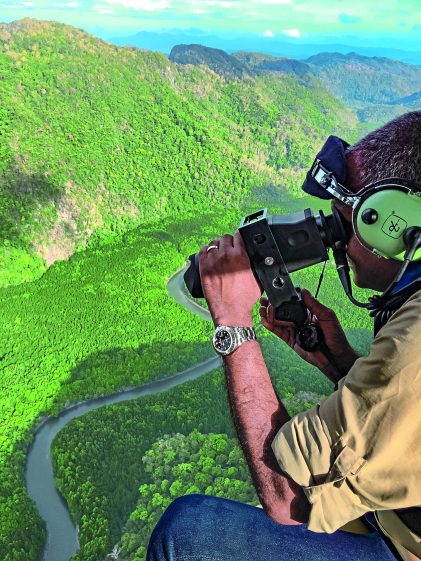
Retired Flight Instructor Aidi Abdullah has lived in Langkawi since 2001 and is the Resident Naturalist at the Four Seasons Resort in Tanjung Rhu.
Being in Langkawi has instilled in him a love for conserving nature. He knows every bird and animal by name if you were to point out one in his presence.
According to Aidi, as told to Shekar, mangroves are one of the most threatened habitats in the world with an annual loss of 1% to 2%, outpacing other tropical rainforests.
Their disappearance is due primarily to over-harvesting of timber and charcoal, urban expansion, pollution, coastal road construction, and industrial development.
Cleared forests and ruined wetlands are turned into shrimp ponds, tourist hotels, golf courses, and marinas. The mangroves in Langkawi had once covered almost 15 percent of the land area. However, two of the smaller patches have been lost to aquaculture and development. In the ’80s, the use of mangrove trees for the production of charcoal led to widespread destruction of the wetlands.
“There just seems to be no appreciation of the true beauty or importance of the area,” Aidi says reproachfully. The same sentiment is echoed by Andrew Harrison, General Manager of the Four Seasons Resort, adding that unless hotels and resorts take a personal interest in protecting the mangroves and educating tourists, a lot more will be lost before the end of this decade.
Andrew said, “Public awareness campaigns, both for the local population and foreign tourists is an activity the resort carries out regularly in the hope that those visiting the island understand the fragility of the ecosystem here.”
A fearless and steadfast soul

The number of boats operating in Langkawi has also exceeded the carrying capacity of the mangroves.
Companies are trying to build theme parks and other tourist attractions, which will potentially destroy habitats such as those of the Brown Winged Kingfisher.
A few fishermen on the fringe use poison and a trawl method called pukat tunda, which is destructive to marine creatures.
These trawlers are indiscriminate in what they catch, killing innocent sharks and turtles as by-catch.
Shekar said wistfully, “What I now see as we sail along the river are merely remnants, struggling to hold on for dear life.
The songs of wandering birds and reptiles fade to black. The mangroves heave a gentle sigh – a breeze I feel on the crook of my neck.
The fishermen head home with their catch, holding on to a hope that their land will not be lost indefinitely. In the quiet of the night, they say their prayers.”
Upon his return to earth after soaring through the sky and enjoying the magnificent views, Shekar said that his heart ached a little upon seeing the large areas of cleared land as they stood waiting for development.
“I wished I could stay here a little longer and revel in the island’s beauty before it gets lost. At the same time, I wished to return home to the presence of my family and friends and tell them the stories of the land I’ve come to befriend.
“I wish to tell that it is here that I’ve witnessed the essential workings of the cosmos above and the world below, where the mountains are the land’s backbone, the ocean its lungs, and the forest its beating heart. What binds them all together is the stories told from me to you: Langkawi’s fearless and steadfast soul.”
This article was originally published in Senses of Malaysia (Jan/Feb 2017) which is available online or in print.
"ExpatGo welcomes and encourages comments, input, and divergent opinions. However, we kindly request that you use suitable language in your comments, and refrain from any sort of personal attack, hate speech, or disparaging rhetoric. Comments not in line with this are subject to removal from the site. "

